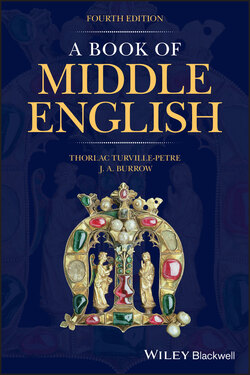Читать книгу A Book of Middle English - J. A. Burrow - Страница 13
1.1.2 From Middle to Modern English
ОглавлениеOur anthology of prose and verse is mainly confined, for purely practical reasons, to writings before 1400; but historians of the language commonly hold the Middle English period to have extended for as much as a century after that date, placing its end at about 1450–1500. This dating evidently owes a good deal to non‐linguistic considerations (the coming of the Tudors in 1485, or even ‘the waning of the Middle Ages’), and it is not easy to justify from a strictly linguistic point of view. But two factors may be singled out:
1 The Great Vowel Shift. This complex set of changes in the pronunciation of English long vowels serves more than anything else to explain the differences between Chaucer’s pronunciation and our own (see below, 2.2.1). Yet these changes occurred over a long period of time and were by no means complete by 1500.
2 The rise of Modern Standard English. The history of this familiar form of the written (not spoken) language properly begins about 1430, with the so‐called ‘Chancery Standard’ employed by bureaucrats in Westminster and elsewhere. The advent of printing in 1473 or 1474, when William Caxton first printed a book in English, eventually served to confirm the national standing of that form of English. The Middle English period may therefore be said to have ended with the establishment of a new national written standard, just as it may be said to have begun with the disestablishment of an old one (1.1.1 above).
